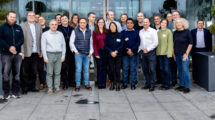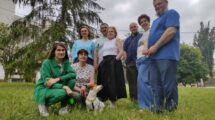On October 21st, the members of the Task Force on Research Engagement Development (TF-RED) gathered online for the Autumn All Hands. The meeting agenda kicked off with a presentation from Lars Fisher (NORDUNet) on NRENs as Data Mover Infrastructure.
Lars raised the interesting question of what the fundamental role of an NREN is and whether they can be summarized as just Internet Protocol packet forwarders or something more. The presentation sought to encourage a discussion about if the current NREN pillars – which include Trust and Identity, Connectivity and Data (with Data being addressed indirectly) – address the user’s need of having data in the right place at the right time and delivered to the right person. These questions raise important topics, as users increasingly want to move and orchestrate data in real-time and always more quickly, securely and reliably.
The presentation challenged the participants to rethink the NREN network and its purpose so that it can address all users’ needs. NRENs can, in fact, facilitate data capture, movement and access for researchers anywhere. The networks should ensure that researchers are well equipped for easy capture, movement and access control of data so that they are able to fully use the capabilities of this network. In ten years from now, NRENs should ensure that researchers are able move any amount of data anywhere at any time in a seamless and secure way. This will result in more efficient and valuable networks for the users.
The presentation was followed by a discussion on how data transfer services are just one of the many functions that NRENs perform. But they do not provide the integration and dissemination of data within the research institution, and tools such as Globus, which provides secure data transfer between systems within and across organizations, are not likely to become more popular, due to addressing only a part of the users research lifecycle. Therefore, making sure that a transparent procedure allowing acceptance and integration of different data sources is in place seems to be a valuable solution. Software and metadata management were identified as important aspects in this subject. Participants agreed on the importance of having the reference architecture blueprints and components to serve NRENs as foundations on which they can rely on to build and operate their services available to users around the globe in a timely fashion.
During the meeting, TF-RED chair Chris Atherton (GÉANT) announced that Juraj Bilić has stepped down from the position of coordinator due to his new position within CARNet, and that Dragana Janeš (CARNet) is replacing him as the new Task Force coordinator. Also, Chris expressed his gratitude and thanks to Carina Kemp (AARNET) who stepped down as a member of TF-RED steering committee. Juraj Bilić volunteered to step in as a steering committee member, but Chris was keen to explain that the offer to join the steering committee of TF-RED is opened to anyone willing to join.
Koen Schelkens from Belnet informed the event participants that the Belgian NREN is undergoing re-organization and planning to create an Innovation Cell and implement Research Engagement function within the NREN. Koen also invited anyone with experience on how they started Research Engagement Department or Innovation Department to share it with him.
For more information about TF-RED and to stay updated on upcoming events and meetings, visit the dedicated webpage and the Wiki page. The TF-RED Blueprint document can be found here. The document describes what research engagement is as a topic and is aimed at new starters to the field or research engagement. Blueprint slides – as presented at the meeting by Juraj Bilić – are available here.







